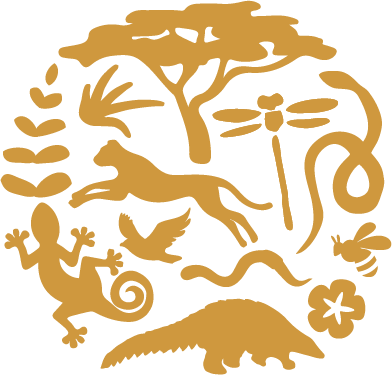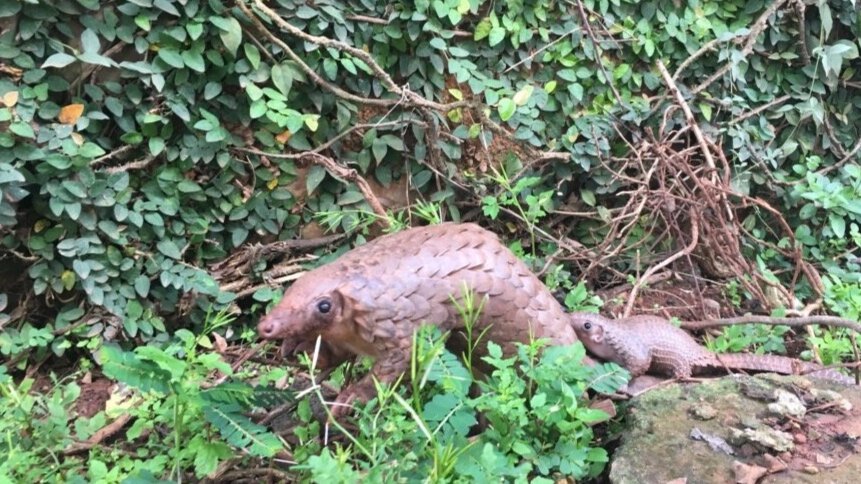
Meet The Pangolin
What is a Pangolin?
Pangolins are mammals that have hard scales made out of keratin (same material as rhino horn) all over their body, this is one of the reason why they are so unique - Pangolins are the only mammals that have scales. These scales accounts for around 20% of a pangolin’s total body weight.
They are predominantly nocturnal and feed exclusively on ants and termites. They can eat more than 200,000 ants a day, which means around 70 million ants a year per pangolin! This is why people call them the "gardeners of nature", because they play such an important role as pest controllers, in addition to all their digging and moving soil.
Females give birth to one cub at a time after a gestation period of approximately between 60 to 150 days depending on the species. Their babies travel around with their mothers by riding on the base of her tail.
Where are they from?
Pangolins have been around in their current form for close to 56 million years! At least twice as long as a better known fellow mammal, the cat. Of the eight species, four are found in Asia and four are in Africa, between rainforest, forest, swamps, and grassy savannahs. Wherever there are lots of ants and termites (their favorites), you will find pangolins.
Species of Pangolins
There are eight different species, they differ in size, color, and where they live but they have two things in common - All of them are in the IUCN red list and all of them are decreasing!
Asia
Philippine Pangolin (Manis culionensis): Critically Endangered
Sunda Pangolin (Manis javanica): Critically Endangered
Chinese Pangolin (Manis pentadactyla): Critically Endangered
Indian Pangolin (Manis crassicaudata): Endangered
Africa
Temminck's Pangolin or Ground Pangolin (Smutsia temminckii): Vulnerable
White-bellied Pangolin (Phataginus tricuspis): Endangered
Giant Ground Pangolin (Smutsia gigantea): Endangered
Black-bellied Pangolin (Phataginus tetradactyla): Vulnerable
Why are they endangered?
One of the 196 sacks containing 7,137 kg of pangolin scales, 4.6 kg of pangolin claws and 870.44 kg of ivory seized in Lagos, Nigeria recently. All wildlife products were destined for export. Image courtesy of The Wildlife Justice Commission.
Sadly the pangolin is the most trafficked mammal on the planet and as such, is in desperate need of protecting and conserving. The keratin scales and their meat is the reason it’s the most trafficked mammal.
In Asia, the bushmeat is eaten as a delicacy, and traditional Asian medicine practices use the scales even though it has been proven that the keratin from their scales has not any medical benefit to treat any diseases. Is like eating our nails (which we are frequently advised not to do!)
On top of the increasing demand on this animal, they face more problems that puts more pressure for its survival.
Loss of their habitat.
Insufficient scientific data.
Lack of awareness.
Uganda
You can find Temminck’s Pangolin, Giant Ground Pangolin, and White-bellied Pangolin. The Black-bellied pangolin hasn’t been seen in years.
Uganda continues to be classified as a major transit hub for illegal wildlife trade. Organized criminal networks and corrupt state actors work together along the trade chain, undermining the rule of law, and impacting all levels of society. Low-level poachers are often from marginalized rural communities and are exploited by the higher-level actors. Limited knowledge about the protection status of pangolins and the benefits of conserving pangolins, leads to arrest of low-income people. When local people are imprisoned, other negative impacts occur, marginalizing them and their communities even more.





